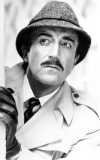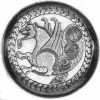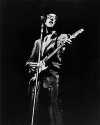 The Honda Point Disaster was the largest peacetime loss of US Navy ships. On the evening of September 8, 1923, 14 destroyers were engaging in simulated combat maneuvers a few miles from the northern side of the Santa Barbara Channel off the California coast. Upon reaching Honda Point, seven destroyers ran aground and were wrecked; two others suffered minor damage. In all, twenty-three sailors lost their lives. What is the “Devil’s Jaw,” and how did it factor into the incident? Discuss
The Honda Point Disaster was the largest peacetime loss of US Navy ships. On the evening of September 8, 1923, 14 destroyers were engaging in simulated combat maneuvers a few miles from the northern side of the Santa Barbara Channel off the California coast. Upon reaching Honda Point, seven destroyers ran aground and were wrecked; two others suffered minor damage. In all, twenty-three sailors lost their lives. What is the “Devil’s Jaw,” and how did it factor into the incident? Discuss
Source: The Free Dictionary
 Established by the
Established by the  Sellers was a British actor who earned international stardom playing a wide range of characters at a time when rigid typecasting was the norm. The son of vaudeville performers, he began appearing with his parents as a boy. He started making films in the 1950s and later gained enormous popularity as the bumbling Inspector Clouseau in the Pink Panther series. In Dr. Strangelove, he plays three characters, including the titular role. What fourth character was he initially supposed to play?
Sellers was a British actor who earned international stardom playing a wide range of characters at a time when rigid typecasting was the norm. The son of vaudeville performers, he began appearing with his parents as a boy. He started making films in the 1950s and later gained enormous popularity as the bumbling Inspector Clouseau in the Pink Panther series. In Dr. Strangelove, he plays three characters, including the titular role. What fourth character was he initially supposed to play?  In ancient and medieval legend, the griffin is a creature with the head and wings of an eagle and the body of a lion. Some traditions also give it a serpent’s tail. The griffin is thought to have originated in ancient Middle Eastern legend and is often found in Persian sculpture. Although its significance is obscure, the griffin is thought to have been a protective symbol, representing strength and vigilance. When is a griffin called an “alce” or “keythong”?
In ancient and medieval legend, the griffin is a creature with the head and wings of an eagle and the body of a lion. Some traditions also give it a serpent’s tail. The griffin is thought to have originated in ancient Middle Eastern legend and is often found in Persian sculpture. Although its significance is obscure, the griffin is thought to have been a protective symbol, representing strength and vigilance. When is a griffin called an “alce” or “keythong”?  The thylacine, known also as the Tasmanian wolf and Tasmanian tiger, was a carnivorous marsupial once found on the Australian mainland, New Guinea, and Tasmania. Often cited as an example of convergent evolution, it was superficially similar to a wolf or dog, though it evolved entirely independently of these animals. It was hunted to probable extinction in the 1930s, and the last captive thylacine died in the Hobart Zoo in 1936. How many thylacine sightings have been reported since then?
The thylacine, known also as the Tasmanian wolf and Tasmanian tiger, was a carnivorous marsupial once found on the Australian mainland, New Guinea, and Tasmania. Often cited as an example of convergent evolution, it was superficially similar to a wolf or dog, though it evolved entirely independently of these animals. It was hunted to probable extinction in the 1930s, and the last captive thylacine died in the Hobart Zoo in 1936. How many thylacine sightings have been reported since then?  Held in
Held in  An early rock ‘n’ roll star, Holly began as a country-and-western singer and gradually added rhythm-and-blues elements to his innovative style. With his band, the Crickets, he established the standard rock instrumentation of two guitars, bass, and drums, and toured the US extensively for two years before his death in a plane crash. He became one of rock’s most enduring cult figures and much of his material was released posthumously. Who else died in the plane crash that killed him?
An early rock ‘n’ roll star, Holly began as a country-and-western singer and gradually added rhythm-and-blues elements to his innovative style. With his band, the Crickets, he established the standard rock instrumentation of two guitars, bass, and drums, and toured the US extensively for two years before his death in a plane crash. He became one of rock’s most enduring cult figures and much of his material was released posthumously. Who else died in the plane crash that killed him?  St. Mark’s Square, or Piazza San Marco, is Venice’s principal plaza. Originating in the 9th c as a small area in front of St. Mark’s Basilica, the Piazza was enlarged to its present shape and size in 1177. As Venice’s central gathering place, it is extremely popular with tourists, pigeons, and photographers. The Piazza is surrounded by a number of historic structures, including the Doge’s Palace, Procuraties, and Biblioteca Marciana. What was the purpose of the paved pattern on the Piazza floor?
St. Mark’s Square, or Piazza San Marco, is Venice’s principal plaza. Originating in the 9th c as a small area in front of St. Mark’s Basilica, the Piazza was enlarged to its present shape and size in 1177. As Venice’s central gathering place, it is extremely popular with tourists, pigeons, and photographers. The Piazza is surrounded by a number of historic structures, including the Doge’s Palace, Procuraties, and Biblioteca Marciana. What was the purpose of the paved pattern on the Piazza floor?